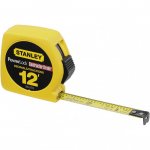oddball_wp
Plastic
- Joined
- Jun 28, 2013
- Location
- United States - Alabama
I have looked around for and while and with further research before making a purchase has revealed that the product is not what I'm looking for.
Is there a measuring tape out there that reads in decimal inches like my pocket rule, or my rigid 12 inch rule? The ones I have found that do have decimal readings but just have it for the 1/8ths or 1/16ths. I am well aware an 1/8 is 0.125 and a 1/16 is 0.0625. I would like one that has graduations purely decimal.
I rarely work with fractions but some parts (20+ foot) require to be a certain length and my only option has been to take skim cuts until I meet a 1/16 to get a "bearing" of where I'm at and then proceed to continue to cut it to length. A tape with tenths and 20ths increments would be a blessing.
In a nutshell, I'm a machinist, not a carpenter, so is there a tape for machinists? (Nothing against carpenters )
)
Any suggestions would be helpful.
Is there a measuring tape out there that reads in decimal inches like my pocket rule, or my rigid 12 inch rule? The ones I have found that do have decimal readings but just have it for the 1/8ths or 1/16ths. I am well aware an 1/8 is 0.125 and a 1/16 is 0.0625. I would like one that has graduations purely decimal.
I rarely work with fractions but some parts (20+ foot) require to be a certain length and my only option has been to take skim cuts until I meet a 1/16 to get a "bearing" of where I'm at and then proceed to continue to cut it to length. A tape with tenths and 20ths increments would be a blessing.
In a nutshell, I'm a machinist, not a carpenter, so is there a tape for machinists? (Nothing against carpenters
 )
)Any suggestions would be helpful.






